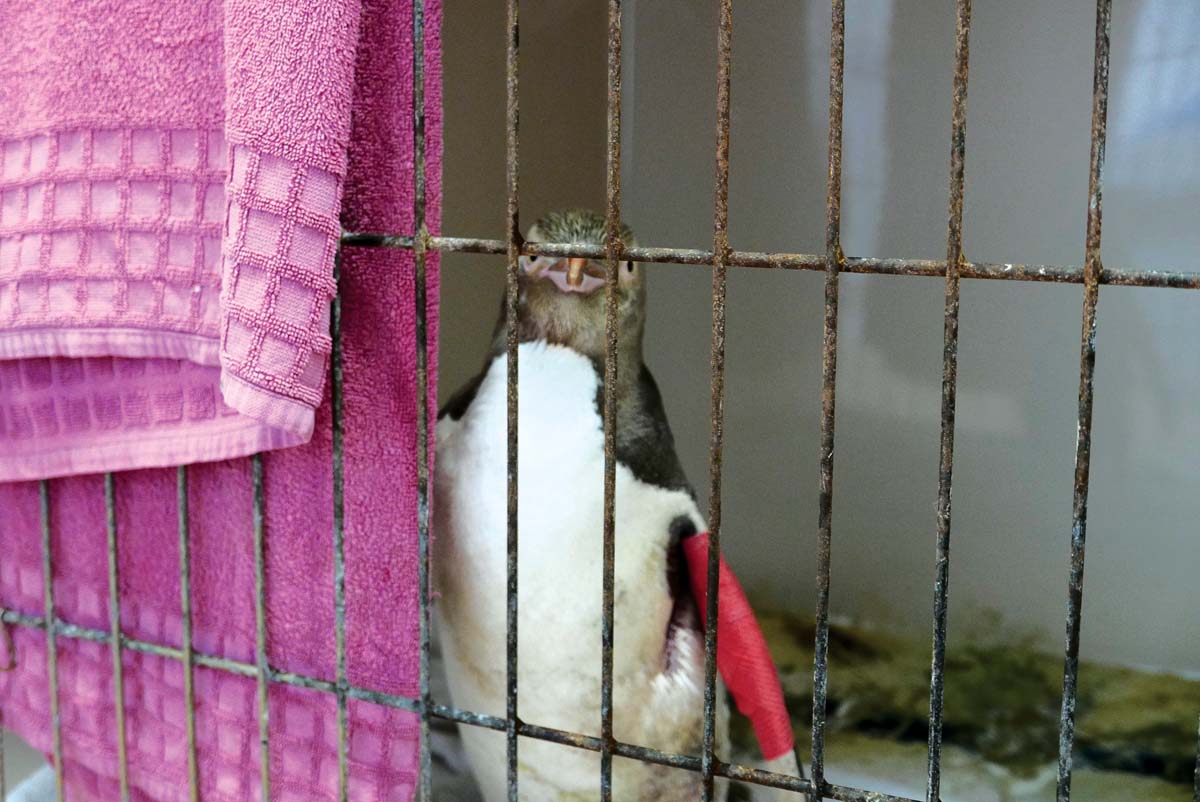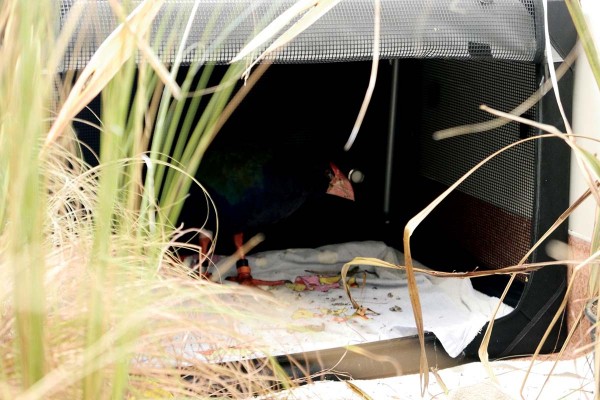Walking through the doors, a fishy, salty smell filled my nostrils. No, I wasn’t in the Unicol bathrooms; I’d just entered the new Dunedin Wildlife Hospital facilities. I was here to chat with the hospital’s volunteer coordinator Lauren about the hospital, last year’s controversial Bird of the Year results and – as it transpired – the possible extinction of seagulls.
The location of the Wildlife Hospital came as a surprise. While I had been anticipating a hospital in the rural outer grasslands of Dunedin, an investigation of their Facebook page revealed that it was actually inside the Polytech Veterinary School, a stone’s throw away from The Flying Squid and Unipol.
Having officially opened its doors in January 2018, Dunedin's Wildlife Hospital is the only facility of its kind in the South Island. Its presence aims to dramatically improve the treatment of South Island native wildlife species. The hospital tested the water with pop-up hospitals in the summers of 2016 and 2017, which saw over 70 admissions and a success rate of 80 percent.
The hospital will provide a wealth of information for future students, and as they move forward they are keen to explore all the unique education and collaboration opportunities such a central hospital can facilitate.
It didn't take me long to figure out that this isn’t a hospital that will accept the dirty stray cats that eat my garbage. It mostly caters to endangered or native animals, ranging from sea lions to seagulls. A month after opening, they were looking after a seagull, a kea, a kakapo, some blackback gulls and plenty of penguins. All these animals earned admission through referral from the Department of Conservation (DOC), who the hospital works very closely with (so if you see an injured penguin, DOC are still the people to contact).
Having said that, the hospital recently made an admission exception for a very good girl, Meg, a six year old labrador-huntaway cross. She went missing in late January up near Purakaunui, where she was involved in a car crash, and was found weeks later in critical condition. Her owner is the co-chairman of the wildlife hospital, and the nurses there were able to help her begin her recovery in the best way possible.
There’s no prescribed length of stay at the hospital. The animals stay as long as they need to, and as long as the animal is getting better, the hospital will continue to facilitate their recovery.

At the moment the hospital primarily houses penguins. Some have had barracuda encounters, with damages to the chest or back legs, and there has been at least one instance of a penguin being attacked by a shark.
Before the Wildlife Hospital opened, there were limited treatment options for local wildlife. St. Kilda Veterinary Centre would try to provide short-term accommodation in their facilities, but couldn’t handle long-term stays. If the animal needed more extensive surgery, they would either be flown up to North Island facilities if deemed stable enough or, sadly, euthanised.
The hospital can also provide treatment for animals when they are hit with unusual conditions. While the summer’s 30 degree days may have been the best thing to ever happen to our tanlines, the heat has been taking its toll on local penguins. They simply aren’t designed to withstand such high temperatures. The heat can affect how wounds heal, and how hospitable their living environments are. They much prefer Dunedin’s typical subantarctic conditions.
A hospital environment is unfamiliar to native wildlife, but it’s a necessary temporary reality to ensure these animals have the best chance possible in the future.
Treating the animals has to be done with consideration. The hospital wants them to be able to assimilate back into the wild, and aiding this process means limiting the amount of people that the animals are exposed to, talking quietly and handling them as little as possible. These precautions aim to retain a sense of distance between the animals and humans, so they can leave the clinic and go back to living their best, most savagely un-domesticated lives.
The hospital tries to make the animals feel at home in the hospital environment by constructing little homely habitats. We said hello to the current resident takahē, Widget, who has been in the hospital since January the 15th. They have created a little habitat of tussocks and sheltered hiding places for her so she can feel safe. Some of the other birds on site are sicker, and they may need to stay in an incubator for the best chance of recovery. Lauren says the penguins don’t necessarily like their temporary lodgings, but they allow the nurses to treat them, and the hospital staff do everything they can to make it as pleasant for the penguins as possible.
Walking through the hospital, I noticed a little seagull in an incubator, which surprised me, as I didn't think they were endangered. I made some inquiries.
Red-billed gulls are the most aggressive scavengers in Dunedin (students excluded). They’re sexually promiscuous, gratingly squawky, and deemed “nationally vulnerable” by DOC, as their numbers are decreasing at an alarming rate.
I had no idea, as they're everywhere. We may not notice the shortage, as the one exception is Dunedin, where red-billed gulls have actually increased in numbers. All those abandoned takeaways on Fatty Lane must be going to good use.
It was time to spill the tea. What bird did Lauren think deserved to win NZ’s Bird of the Year 2017? Choosing a diplomatically neutral stance, Lauren revealed that she did not vote, but her personal favourite is the takahē. I suspect that she’d coded her response, and that if I knew more about codes I could have deciphered the phrase “Kererū, NZ’s top-heavy fabulous supreme bird” but that will remain unsolved.
Oddly enough, the current champion of the competition was on-site - a kea, who preened for our camera like there was no tomorrow.
Lauren was happy to provide some insight into the personalities of the penguins, who “look really cute but they won’t think twice about taking a nip or giving you a whip with their flippers. They have real spunk and distinct personalities”.
The Wildlife Hospital is here because of campaigning for donations and funding, and they still need donations to ensure the hospital can continue to run. But if you don’t have the means to donate, you can always inquire about donating your time. They need volunteers who don’t mind starting off with the dirty work - cleaning down cages, tidying and restocking, and there are opportunities to upskill as you gain more experience. Volunteers allow the nurses to dedicate more time to the patients, and it'll make you feel like a better person.
If you're interested, email volunteer@wildlifehospitaldunedin.org.nz and let them know you're keen.
This hospital is a great, wholesome addition to the campus and everyone that works there cares a lot about helping out some of NZ’s most adorable assets.



